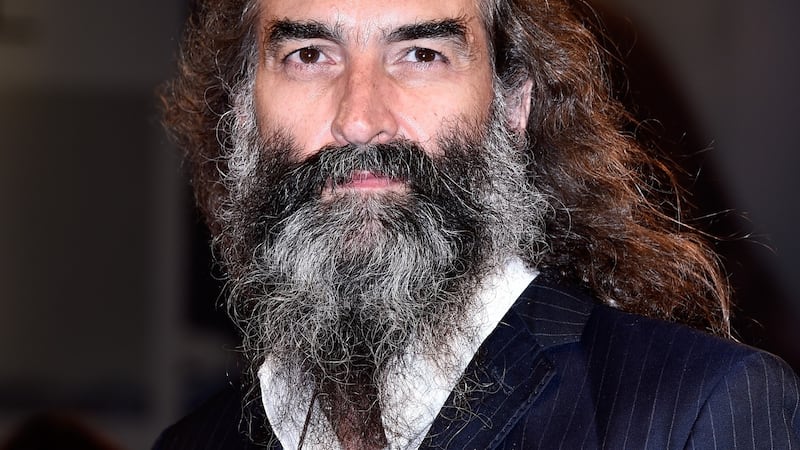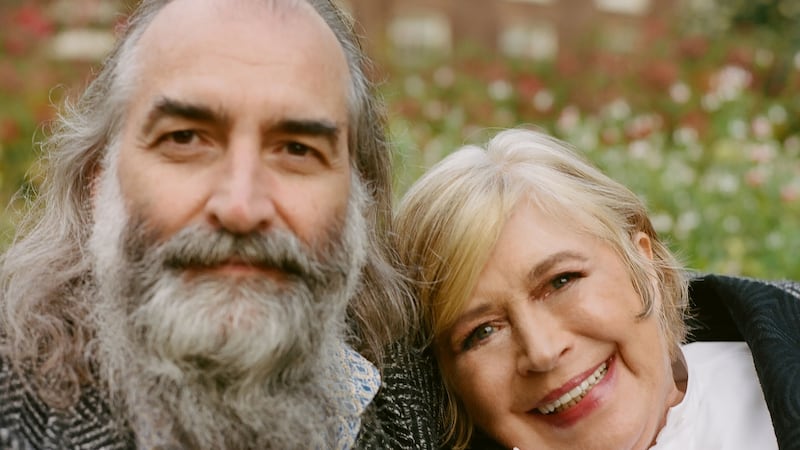In the summer of 1999, Nina Simone gave one of her final UK concerts, appearing at the Nick Cave-curated Meltdown extravaganza in the Royal Festival Hall in London. Frail, barely able to walk, she made it to the stage with great difficulty, removed a wad of gum from her mouth, stuck it on her Steinway piano and began to hammer out furious chords. Witnesses described her performance that night as simultaneously terrifying, joyous and transcendent. Warren Ellis – the Bad Seeds/Dirty Three violinist and Nick Cave’s closest collaborator – was so blown away that when the show ended he climbed onstage, removed the gum from the piano, wrapped it in a stage towel and stashed it in a Tower Records bag.
Nina Simone died in 2002. Over time, Ellis came to think of that gum as a sort of sacred artefact. When Nick Cave texted to ask if he wanted to contribute anything to the expansive Stranger Than Kindness exhibition being mounted in Copenhagen in 2017, Ellis volunteered the gum. So began a process of veneration that required this tiny object to be put in a mould, replicated, cast in silver and gold, and placed on a plinth like a holy relic.
Four years later, Faber & Faber are publishing Nina Simone’s Gum, Ellis’s book about the creative impulse and the supernatural power of music, about objects and their fields, about artisans and crafts workers, about the bond between brothers and itinerant musicians.
“For me it’s about ideas and acting on them,” Ellis says on a Zoom call from the brick-walled studio at the back of his home in the Paris suburbs. “It feels to me like 20 years later this story suddenly revealed itself.”
Anyone who’s watched footage of Ellis at work with Cave will know that the pair have a rare musical relationship, much of which is based on the former’s ability to nurture fragile or unlikely ideas into being. Confidence is crucial, the capacity to maintain the nerve and not snuff out a bad idea before it turns into a good one.
‘Taking a risk’
“The book was a bit like that,” Ellis says. “When Dan [Papps] from Faber first approached me, he said, ‘I think you’ve got something to say.’ He’d seen a concert of the Dirty Three in the early 2000s, and he really liked the way I’d make a story up seemingly off the cuff. I was able to get a few ideas and thread them together, and sometimes it worked and sometimes it didn’t, but it required taking a risk because you were really in a moment, it could fall flat or it could go somewhere.
“It began back when I started the Dirty Three. I’d had this f**ked day, my girlfriend at the time had tried to kill herself, I think it was like, gig number three, and I got kind of down and I didn’t really feel like being there. I was like, ‘Aw f**k, you wouldn’t believe the day I’ve had.’ So I started talking about finding the girlfriend in a pool of blood and all that stuff, and everybody was laughing, they thought I was making it up, and I realised the comic aspect of the whole thing. But when Dan approached me I wasn’t really sure. The writing thing was a whole new scary world. Oren [Moverman, the Israeli filmmaker and screenwriter] started interviewing me because I was so blocked with the whole process, and he just said, ‘You think this is about the chewing gum, but it’s not, Warren, it’s about you. You’re the only person in that room of 2,000 people that thought to take care of it. I know you can’t see this, but that’s what it’s about. Why do you care?’ I fought against that. Oren totally made me dig further than I would have, and my idea of what I thought it was about shifted so much.
I realised the effect on people that this little piece of gum had, how it moved them, and I realised the simplicity of what I was doing was the key to it
“I presented it in a 45-minute pitch to a couple of people at Faber and showed them the gum, and Alexa [von Hirschberg] just welled up in tears when she saw it. I realised the effect on people that this little piece of gum had, how it moved them, and I realised the simplicity of what I was doing was the key to it. My writing is very simple. I would love if this book was read by kids. I think it’s why I put the image of me and my brothers near the end.”

Estranged older brother
In fact, the book led to Ellis’s reconnecting with his estranged older brother Steven in order to verify a memory of a childhood vision of clowns playing in their backyard.
“My older brother, when he was 15, he just kind of left the house in a f**kin’ blaze of glory,” Ellis remembers. “He was gone, and it fractured something within the family, and where the fault lies doesn’t matter, but this idea of reaching out to him, seeing him as that kid again, this older brother that I needed, and he was there in some way... This little act that I’d done, if all its purpose was to reconnect with that guy, that was a beautiful thing. It’s funny, because the story has continued on: Faber have a copy of the gum, it’s going in the archives with Sylvia Plath’s manuscripts and Ted Hughes’s texts. I gave it to them for taking care of the story for me.”
Nobody knew what was going to happen with him after Arthur died
Considering the non-verbal way in which brothers sometimes communicate, I mention an interview in which Cave described Ellis as a constant presence hovering nearby after his son Arthur died in a fall in 2015. His being there provided continuity in a time of intense and delicate grief.
‘I had no words’
“All I knew was to say to Nick, ‘Tell me what you want, tell me what you need, if you know what it is, and then I’m there.’ I had no words for what was happening to him and his family, but our relationship – we sit in a room and make this music together and don’t talk. There’s this thing that goes on between us, and I don’t ask any questions in the hope that it’ll continue, and there are some things we don’t need to talk about as a result of that. And I guess when Arthur died, he knew that I was there, and he’s like, ‘I want to try and finish the record’, and I just said, ‘Dude, I’m there. I’m your man.’ We just do what we can in those situations. For me it felt like the creative process is something he’s done all his life – if he wanted to engage in it, then, y’know, I love Nick to pieces, I love the guy enormously, I thought, if there’s any way I can help him get back into that, then that’s what I should do. It’s the strangest thing, death, because you know life will go on in some way, so there’s a surreal aspect – it makes us aware that we have a life.”
Grief
We discuss a photograph in the book that Ellis took of Cave singing Tupelo during rehearsals for the Skeleton Tree tour in Melbourne, 2017, re-entering his body after the half-life of grief. Ellis writes: “I took it because it was the first time I saw his old stage self in rehearsals... Seemingly coming to his own rescue.”
“Yeah, I get shivers talking about it cos it was clearly such a moment,” he says now. “Nobody knew what was going to happen with him after Arthur died. I’d been with him in the studio working on soundtracks and things prior to that, but there was something incredibly spiritual about that moment. I took the picture because I was like, ‘He’s gonna be okay.’ I hadn’t seen that for 18 months, since his son had died. I’d seen aspects of him, and I’d seen a new thing develop, but it was when he did Tupelo, the transformative power of the song, like with Nina Simone.

‘Cosmic world’
“For me the book is about collaboration, encouragement, love and care being needed to help ideas. And I guess the kind of cosmic world. What’s important to us can be absolutely nothing and everything. I wanted to write a book that was about awe and wonder, that we can do beautiful things, that people can be f**king awesome. I had the poems that Marianne [Faithfull] had read [Ellis scored the spoken word album She Walks in Beauty] flying around in my head when the lockdown was happening, and I didn’t know if Marianne was gonna die, and I was listening to these texts, there was all this rage machine kicking off and Trump was f**kin’ on fire, everyone was doing the wrong thing, and no one knew what was right, we were this and we were that... I just kind of sat down and thought, ‘Right, I want to write a book about the good of it all.’”
Which would make for a fine concluding thought, if not for this:
“I bought some land, I donated it to people in Sumatra, and we’re building a park for animals with special needs, so I’m going to go there next year and build a big f**king six-foot sculpture of Nina Simone’s gum in stone and stick it in a pond so the bears and the monkeys can play on it. And then down the track I’ll build a shack, go there, get back on the gear and go out in a blaze of glory, feeding the armless monkeys and the toothless bears in my autumnal years. We’re building a cemetery for the little ones that don’t make it through and the ones that never leave, so you can roll me in there and put a coconut tree on me in the end.”
Nina Simone’s Gum is published by Faber and Faber


















